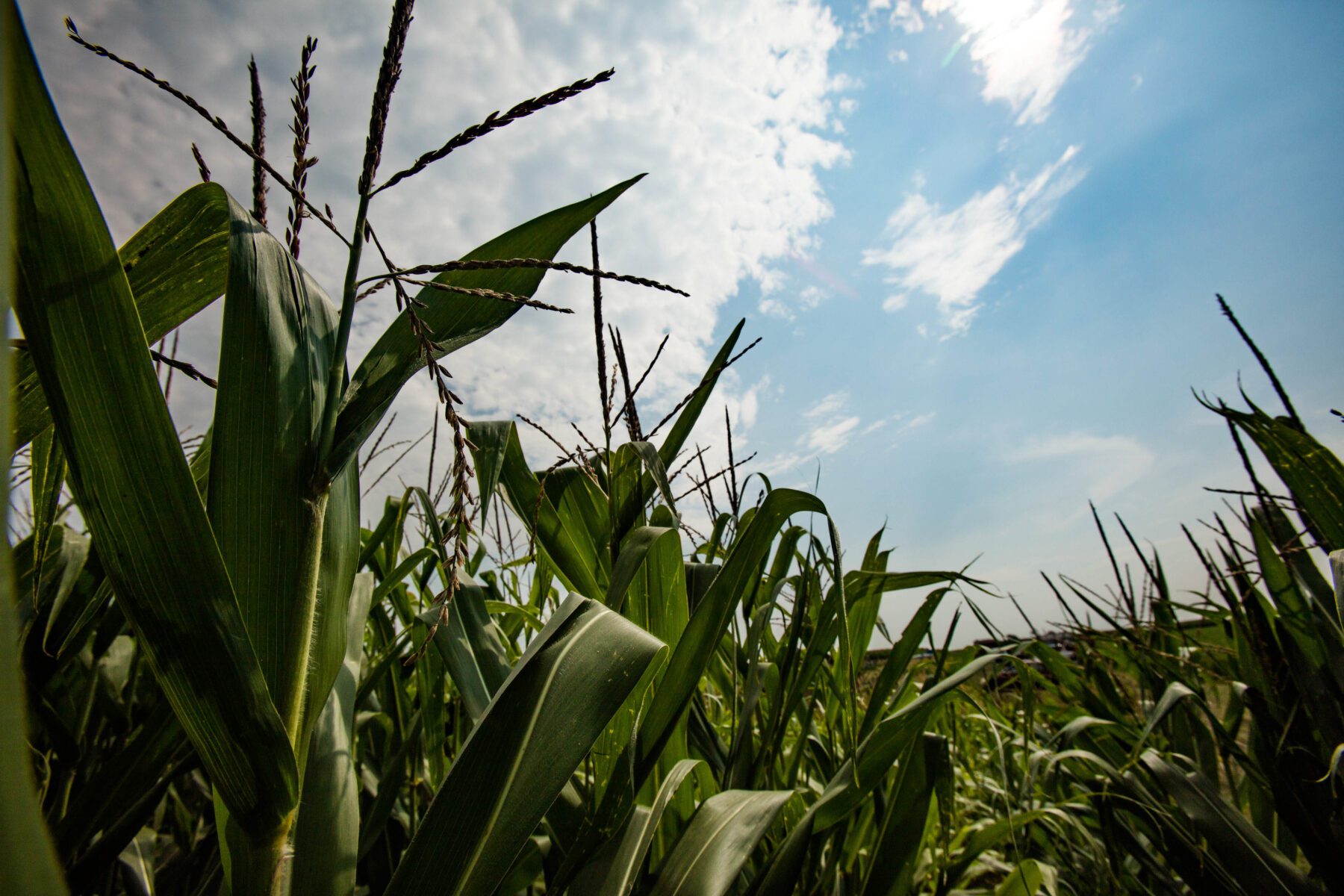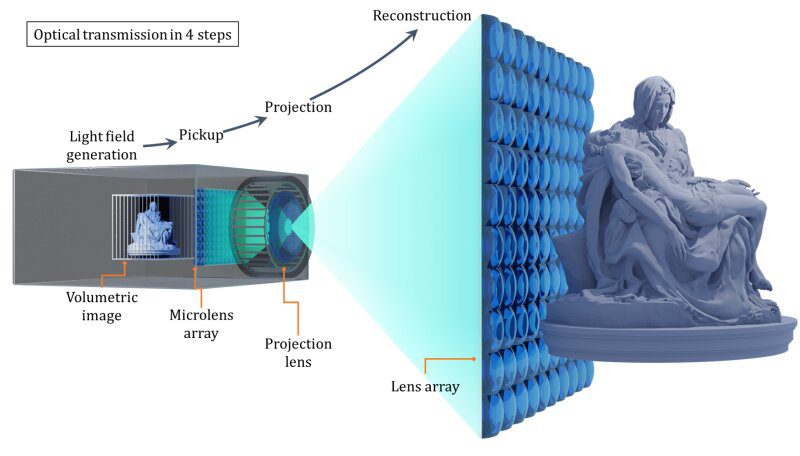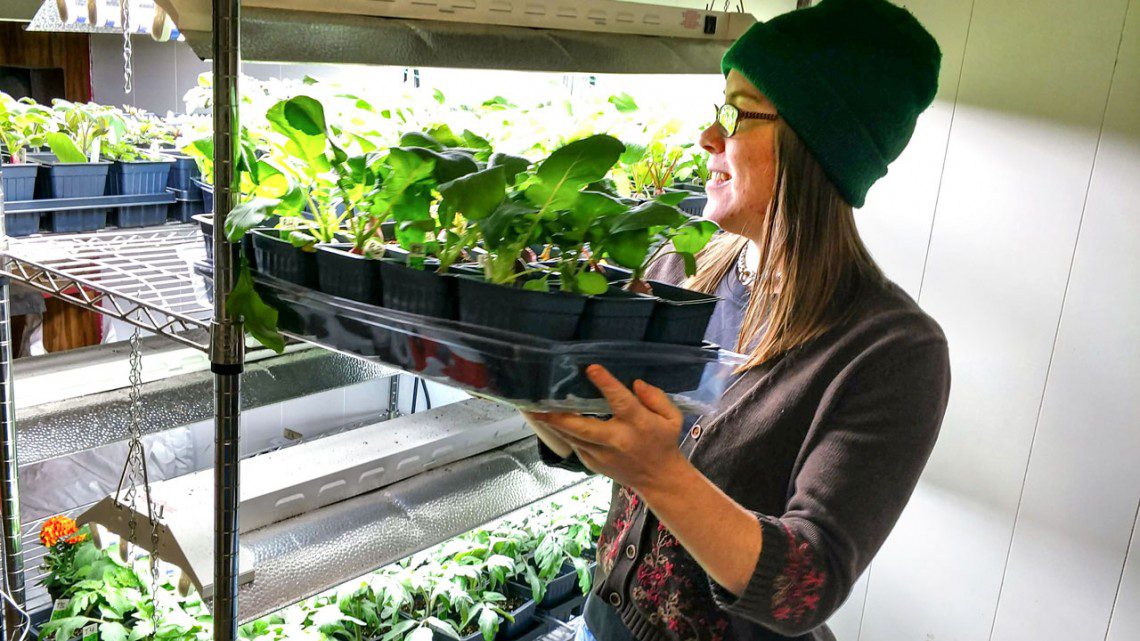
RIPE researchers have shown that by treating photosynthesis as a dynamic process, C4 plants like corn could improve their reaction to changes in light, improving overall yield. Image by Brian Stauffer
A team from the University of Illinois has developed a model that treats photosynthesis as a dynamic process rather than an activity that either is or is not happening.
This allowed the group to examine the impacts of the many fluctuations in light that crop leaves experience due to intermittent clouds, overlying leaves, and the sun’s daily passage across the sky. In today’s densely planted crops, these fluctuations are the norm. Lower efficiency of photosynthesis due to slow adjustment to light changes and are estimated to cost up to 40 percent of potential productivity. If crop leaves could be genetically manipulated to adjust more rapidly, then the gain in productivity and efficiency of water-use would be substantial.
Plants use sunlight to generate their food through photosynthesis. When the sun rises each morning, plants must prepare themselves to receive nutrients from the sunlight, which takes time. Decreasing the prep time of plants could hold the key to improving yields in many varieties.
“When light changes, the plants need time to get used to it. It takes time and decreases efficiency,” said Yu Wang, a postdoctoral researcher at Illinois, who led this work for a research project called Realizing Increased Photosynthetic Efficiency (RIPE). “Our goal is in trying to limit the loss during the transition period. We are working to make the plants respond faster to the dynamic light environment.”
RIPE, led by Illinois, is an international research project that aims to increase global food production by developing food crops that turn the sun’s energy into food more efficiently with support from the Bill & Melinda Gates Foundation, Foundation for Food & Agriculture Research, and U.K. Foreign, Commonwealth & Development Office.
In this recent study, published in The Plant Journal, RIPE researchers showed that by treating photosynthesis as a dynamic process, they could improve the response time of C4 plants, (plants that use C4 carbon fixation for photosynthesis) such as corn, to adjust more rapidly to fluctuations in light.
First, they validated their model against actual photosynthesis measurements in fluctuating light, which they made in corn, sorghum, and sugarcane. They then used their model to predict which steps in photosynthesis limited the response of the process to fluctuations in light in the three crops.
“The important thing to realize is in a crop canopy, light is changing all the time, and yet 99% of investigations of what limits photosynthesis have concerned constant light, something a crop leaf in the field might never experience,” said RIPE Director Stephen Long, Ikenberry Endowed University Chair of Crop Sciences and Plant Biology at Illinois’ Carl R. Woese Institute for Genomic Biology. “Perhaps we overlooked the idea that if we improve efficiency in fluctuating light, not just in constant light, we could see big results.”
By treating photosynthesis as a dynamic process, the team was able to look at which segments of the process limit the speed of response. Through their modeling and simulation, they identified two proteins they believe are essential in the adjustment. This summer, the group is continuing their work by partnering with another RIPE research team to regulate the two proteins in corn and with a team from the U.S. Department of Energy Center for Advanced Bioproducts & Bioenergy Innovation (CABBI) at Illinois in sorghum and sugarcane to engineer these proteins.
“We think this has great potential,” said Long. “This could improve productivity by 10 to 20 percent. Compared to yield increases that are achieved, more importantly, year over year with breeding, this would be a large jump. Of course, time will tell if we can realize this.”
The RIPE project and its sponsors are committed to ensuring Global Access and making the project’s technologies available to the farmers who need them the most.
Original Article: Dynamic photosynthesis model simulates 10-20 percent yield increase
More from: University of Illinois at Urbana Champaign | Australian National University | Chinese Academy of Sciences | Commonwealth Scientific and Industrial Research Organisation | Lancaster University | Louisiana State University | University of California Berkeley | University of Cambridge | University of Essex | Agricultural Research Service
The Latest Updates from Bing News & Google News
Go deeper with Bing News on:
Dynamic photosynthesis
- Is there a secret ecosystem underneath Earth's driest desert?on April 28, 2024 at 12:30 am
Beneath the Atacama Desert, Earth's driest desert, lies a thriving subterranean biosphere of microbial life. Scientists discovered diverse bacteria, including extremophiles, thriving in the harsh ...
- Symbiosis: A Deep-Rooted and Prevalent Ecosystem Dynamicon April 27, 2024 at 9:20 am
Because they absorb air pollutants such as heavy metals they can be used as biomonitors.In another very common example of mutualistic symbiosis, most plant species live in a close relationship with ...
- Gene genius: How gene technology is changing the future of foodon April 26, 2024 at 10:00 am
Genetic technologies have experienced a step-change in recent years; CRISPR in particular is a powerful new technique for gene editing – gene editing techniques allow for more p ...
- 46 years of HORT 201on April 23, 2024 at 10:24 am
David Reed, Ph.D., finishes his final semester teaching Horticultural Science and Practices after 46 years of teaching ...
- How planting trees is a simple solution to counter air pollutionon April 23, 2024 at 6:00 am
One tree can provide enough oxygen for four people in a day, while also absorbing over 48 pounds of carbon dioxide annually ...
Go deeper with Google Headlines on:
Dynamic photosynthesis
[google_news title=”” keyword=”dynamic photosynthesis” num_posts=”5″ blurb_length=”0″ show_thumb=”left”]
Go deeper with Bing News on:
Realizing Increased Photosynthetic Efficiency
- Increased efficiency and added bilingual language support highlight newest updates to RC Mowers' autonomous moweron April 19, 2024 at 12:03 am
"The AMR provides commercial landscapers with the opportunity to increase profit from mowing services, which traditionally is the number one source of landscaping companies' revenue but also ...
- 17 Things That Declined in Quality but Increased in Price without People Realizingon April 10, 2024 at 8:17 am
Rising prices are, unfortunately, a sad fact of life nowadays, but we expect an increase in quality to justify the cost. However, this isn’t always the case; here are 17 examples of things that ...
- Researchers observe anomalously bright single-molecule upconversion electroluminescence phenomenonon March 31, 2024 at 5:00 pm
realizing a brand-new high-efficiency upconversion excitation mechanism that involves the pure carrier injection process. The mechanism can make good use of the spin triplet state of a single ...
- Unlocking Value in the Lab Through Increased Efficiencyon March 27, 2024 at 5:01 pm
For example, our pharma customers often share the need to improve lab efficiency. They work under the pressure of constrained timelines and patient needs for new medicines, so they want to find ways ...
- Mills: Increased efficiency and new technology result in record oil productionon March 9, 2024 at 11:01 pm
Increased efficiency and the development of new technology by America’s oil industry resulted in record oil production last year, according to a study by the Energy Information Administration.
Go deeper with Google Headlines on:
Realizing Increased Photosynthetic Efficiency
[google_news title=”” keyword=”Realizing Increased Photosynthetic Efficiency” num_posts=”5″ blurb_length=”0″ show_thumb=”left”]










